Understanding Group Dynamics in ABA Therapy
Applied Behavior Analysis (ABA) therapy has long been a cornerstone treatment for individuals with autism spectrum disorder (ASD), focusing on behavior modification through scientifically grounded methods. While ABA is traditionally known for its one-on-one approach, group activities within center-based ABA therapy settings have emerged as a critical component for fostering social skills, communication, and peer interactions. This article explores the multifaceted role that structured group activities play in enhancing therapeutic outcomes, highlighting how centers utilize these sessions to complement individualized treatment and promote holistic development.
What Is Applied Behavior Analysis (ABA) Therapy?

What is Applied Behavior Analysis (ABA) therapy?
ABA therapy is a science-based approach that focuses on understanding behavior and how learning takes place through environmental interactions. It aims to increase beneficial behaviors such as communication, social skills, and daily living activities, while decreasing behaviors that may be harmful or interfere with learning.
ABA programs are individualized and carefully designed by qualified professionals, particularly Board Certified Behavior Analysts (BCBAs). These programs use a variety of techniques including positive reinforcement — rewarding desired behaviors to encourage their repetition — and structured teaching with clear antecedents and consequences.
A central goal of ABA is to promote independence by helping children develop essential skills tailored to their unique needs. Therapy sessions typically involve direct instruction, natural environment training, and group activities to generalize skills across settings.
Early and intensive ABA intervention has been shown to significantly improve socialization, communication, emotional regulation, and adaptive functioning in children with autism spectrum disorder (ASD). Evidence from decades of research and multiple controlled studies supports ABA as an effective treatment, enhancing intellectual functioning and quality of life for individuals with ASD.
By consistently applying behavioral principles in a structured and engaging way, ABA therapy helps children build lifelong skills in a supportive environment, fostering progress toward personal and social independence.
Who Provides ABA Therapy in Center-Based Settings?

Types of Professionals Involved in ABA Therapy
ABA therapy in center-based settings is delivered by a team of trained professionals with specialized certifications. The primary roles include Board Certified Behavior Analysts (BCBAs), Board Certified Assistant Behavior Analysts (BCaBAs), and Registered Behavior Technicians (RBTs), supported sometimes by paraprofessionals.
Roles of BCBAs, BCaBAs, and Registered Behavior Technicians (RBTs)
BCBAs are highly qualified experts, typically holding a Master's degree. They are responsible for designing individualized treatment plans, conducting assessments, and supervising therapy staff. BCaBAs have a Bachelor's degree and work under BCBA supervision, assisting with treatment design and oversight. RBTs implement the therapy directly with children, delivering interventions and collecting data to monitor progress. Paraprofessionals may provide additional assistance during session activities.
Collaborative Team Approach in Therapy Centers
A successful ABA therapy center relies on collaboration among all team members. BCBAs set goals and guide interventions, BCaBAs support assessment and supervision, and RBTs maintain day-to-day therapy delivery. This teamwork ensures consistency, individualized programming, and effective data-driven adjustments.
Qualifications and Supervision Requirements
All providers must complete specific training and certification processes. BCBAs and BCaBAs are certified through the Behavior Analyst Certification Board (BACB), ensuring adherence to rigorous standards. RBTs receive focused training and work under continual supervision to maintain fidelity in treatment implementation. This structured staffing ensures quality care and maximizes therapeutic outcomes for children with autism in center-based ABA programs.
Core Goals of ABA Therapy for Autism

What are the main goals of ABA therapy for individuals with autism?
Applied Behavior Analysis (ABA) therapy is designed to increase socially significant and functional behaviors while decreasing challenging ones. One of its principal aims is to enhance communication skills, social interactions, and daily living abilities such as dressing, eating, and personal hygiene. These improvements support greater independence and a better quality of life for children with autism.
ABA therapy is highly individualized. Qualified behavior analysts assess each child's unique strengths, challenges, and interests to develop tailored treatment plans. These personalized goals ensure that interventions target specific behaviors important to the child's development.
A critical focus of ABA is the generalization of learned skills across different environments—including home, school, and community settings—so that children apply these skills beyond therapy sessions. This generalization helps make learning functional and relevant to everyday life.
To maximize effectiveness, ABA therapy involves strong family and caregiver participation. Training parents and caregivers in reinforcement strategies and techniques promotes consistency and helps maintain progress over time.
Throughout treatment, continuous monitoring and data collection guide adjustments to the therapy plan. This ensures that goals remain relevant and that the child's development is supported continuously.
In summary, ABA therapy’s main goals center on increasing positive, meaningful behaviors, reducing maladaptive ones, and fostering skills that enable children with autism to thrive socially and independently within their communities.
How ABA Therapy Functions in Practice
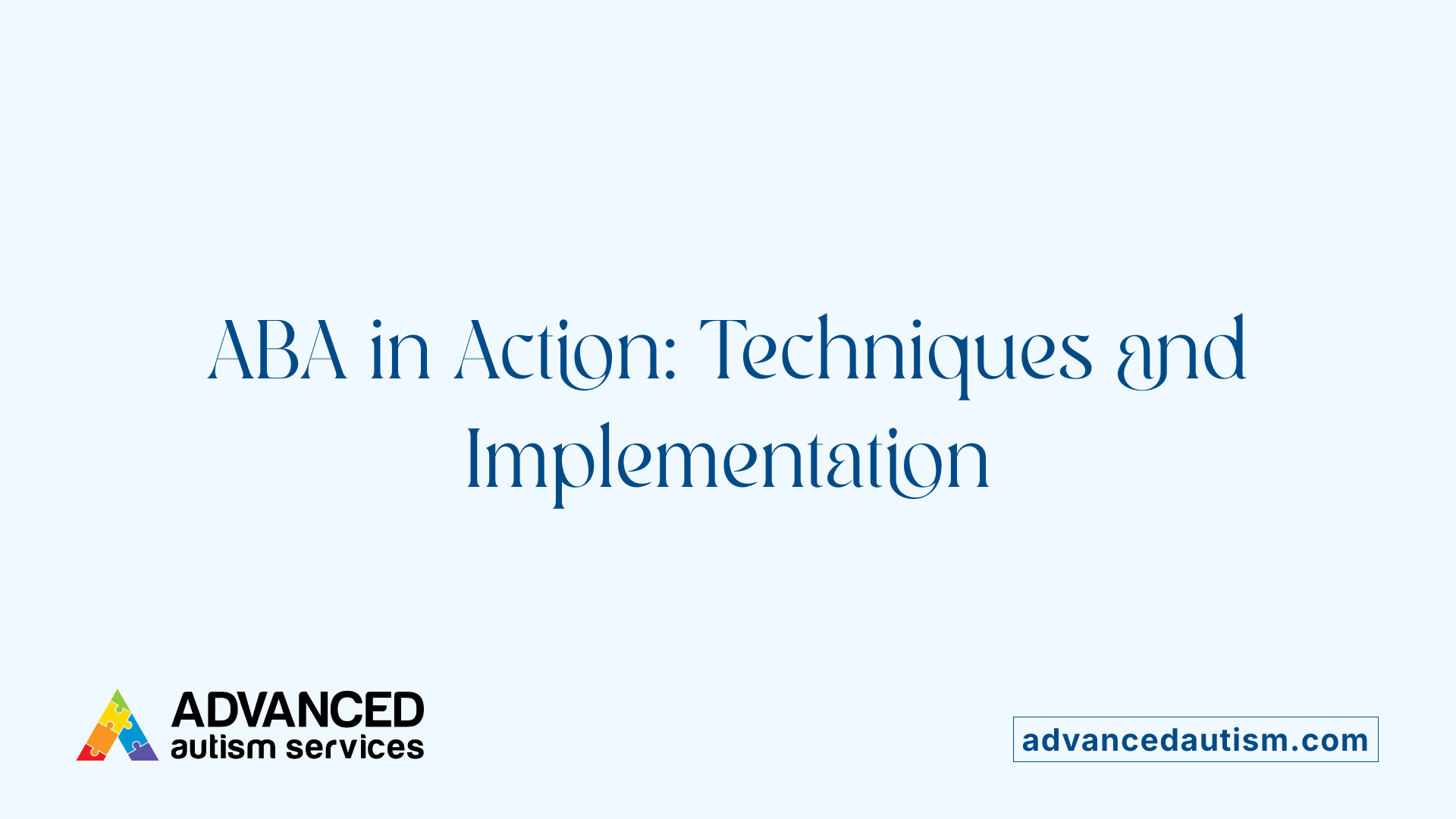
How does ABA therapy work in practice?
ABA therapy applies principles of learning and behavior science to support individuals in acquiring new skills and reducing challenging behaviors. Each therapy program begins with a qualified behavior analyst who designs a personalized treatment plan targeting communication, social skills, self-care, and academic areas based on the individual's strengths and needs.
Key techniques include discrete trial training, prompting, and modeling to teach specific skills systematically. Naturalistic teaching methods such as Pivotal Response Treatment enable learning in everyday environments, encouraging generalization of skills.
Positive reinforcement plays a central role, where desired behaviors are rewarded to increase their frequency. Rewards might include praise, tokens, or access to preferred activities.
Ongoing data collection and progress monitoring allow therapists to assess effectiveness continuously. This feedback guides adjustments to interventions, ensuring they remain aligned with the child's evolving development.
ABA therapy is versatile and delivered across different settings, including the home, school, community, and specialized centers. This flexibility ensures that learning opportunities are consistent and adapted to real-life contexts, which supports meaningful improvements and independence.
Evidence Base Supporting ABA Therapy Effectiveness
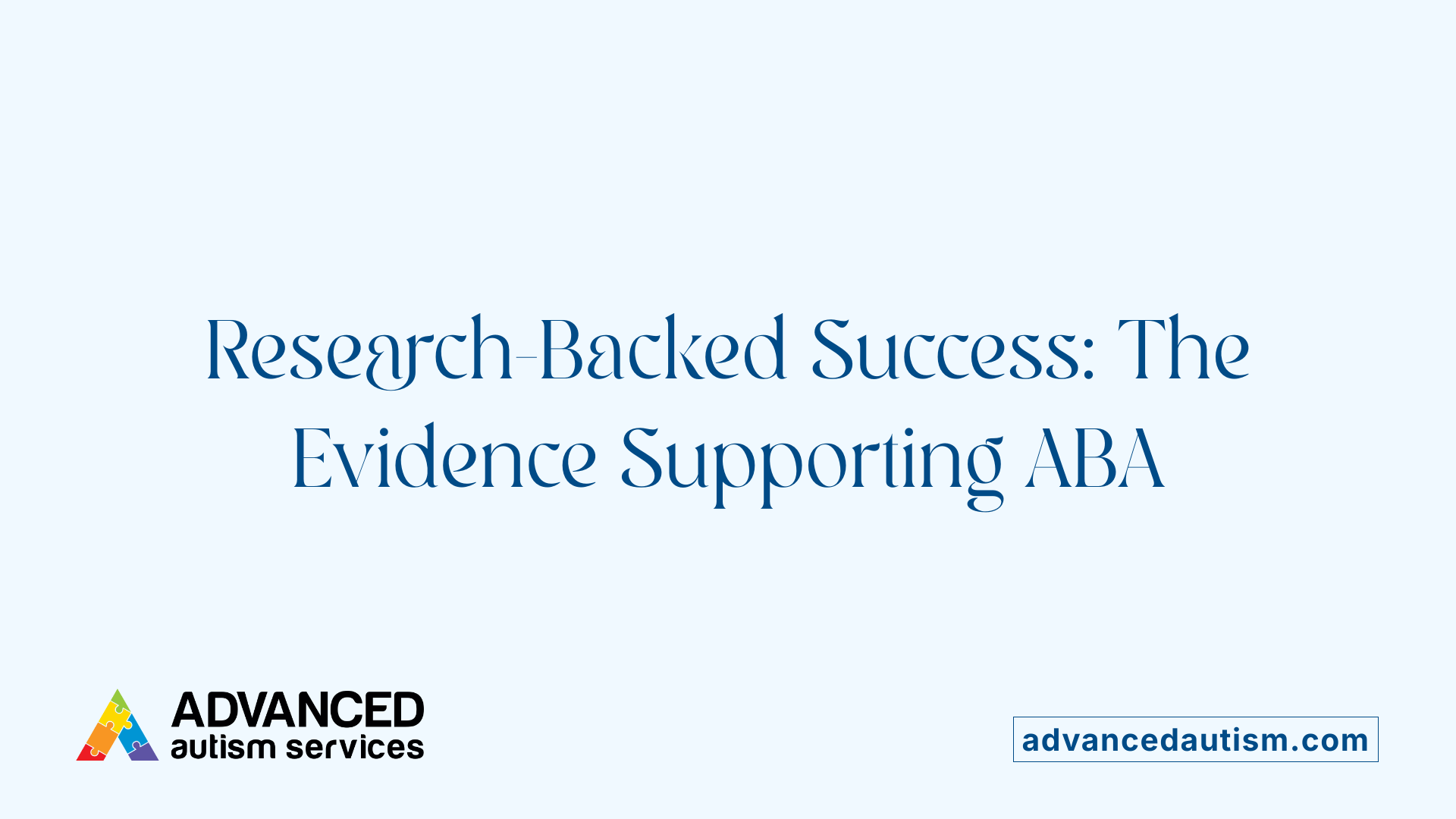
What evidence supports the effectiveness of ABA therapy for autism?
Numerous research studies have demonstrated that Applied Behavior Analysis (ABA) therapy is a scientifically validated approach to improving the lives of children with autism spectrum disorder (ASD).
A variety of studies report significant improvements in critical developmental areas such as social skills, communication, and daily living activities. For example, one controlled study involving institutionalized children with autism applied ABA sessions twice weekly, revealing noteworthy gains in social and emotional skills. Using multivariate analysis of covariance (MANCOVA), researchers found that ABA positively influenced emotional and social development, increasing adaptive behaviors and social communication while reducing separation anxiety.
How do meta-analyses further underline ABA's effectiveness?
Meta-analyses pooling data from multiple randomized controlled trials (RCTs) support ABA’s impact, particularly in enhancing socialization, expressive language, and communication abilities in children with ASD. One such meta-analysis examined 14 RCTs involving 555 children, confirming significant benefits in these domains. However, it also identified areas with less pronounced effects, such as receptive language, cognitive functions, and repetitive behaviors.
What are the limitations and scope of ABA improvements?
While ABA is highly effective in many domains, its impact may vary across different ASD symptoms. Improvements in social and communication skills are consistently strong, but gains in broader cognitive or motor skills are less certain according to existing research. This highlights ABA’s primary strength in enhancing socially significant behaviors rather than resolving all developmental challenges.
What are the long-term benefits of ABA for children with ASD?
Long-term, comprehensive ABA interventions are linked with sustained improvements in language and social functioning, contributing to better overall developmental trajectories. Early intensive treatment combined with individualized programs and ongoing adaptation ensures that children develop essential life skills and emotional regulation abilities necessary for independence.
ABA remains a cornerstone of autism therapy backed by decades of empirical evidence. Its focus on tailored, consistent, and positive reinforcement-driven interventions helps children with ASD maximize their potential in social interaction, communication, and everyday functioning.
The Structure and Advantages of Center-Based ABA Therapy
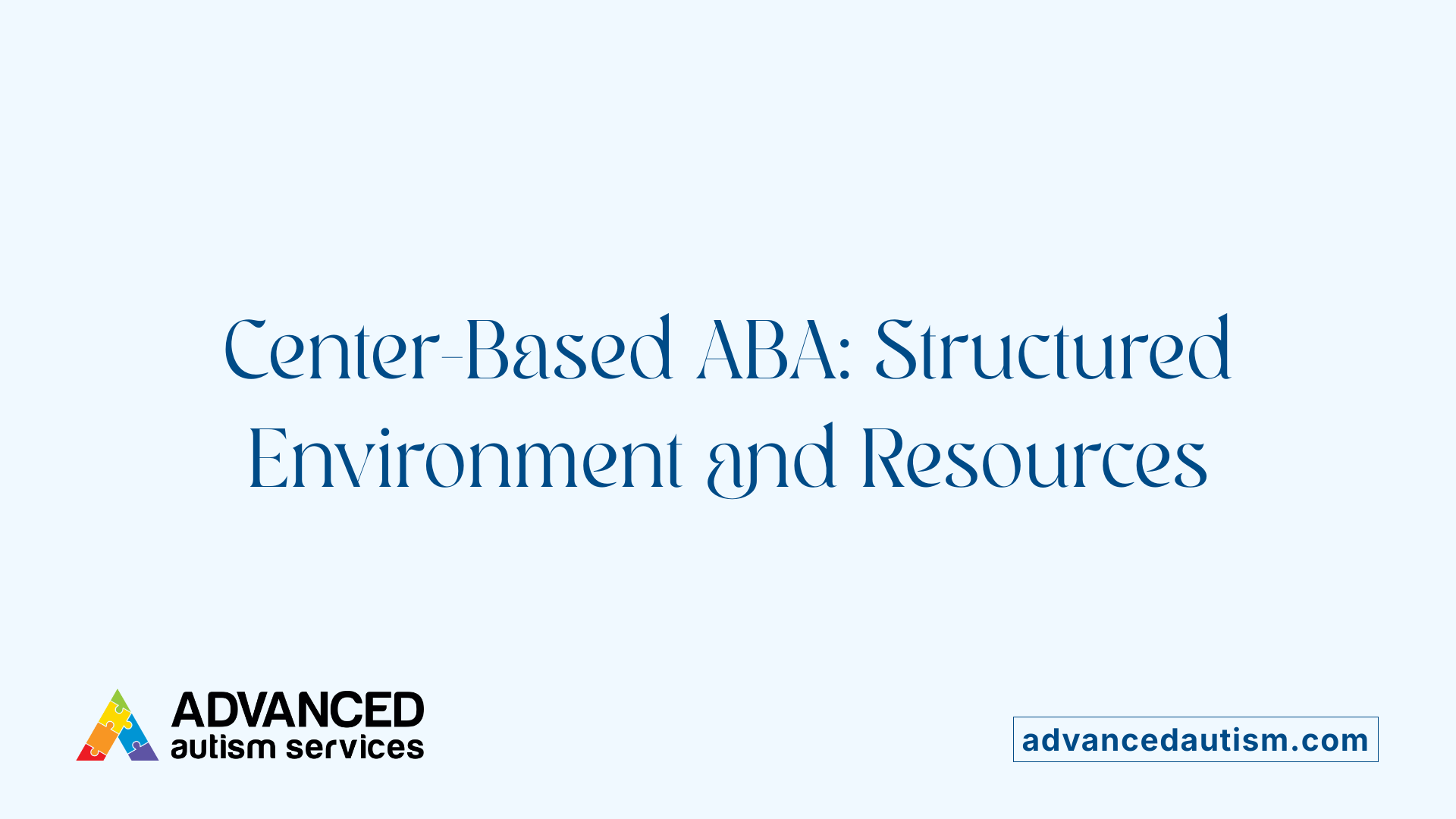
Highly Structured Environment Benefits
Center-based ABA therapy provides a highly structured setting that minimizes distractions, allowing children with autism to focus better on learning tasks. This predictability fosters a sense of safety and routine, which is essential for many children on the spectrum.
Availability of Specialized Equipment and Resources
ABA centers are equipped with specialized tools such as sensory integration devices and educational materials designed to support diverse learning needs. These resources enhance the therapeutic experience, enabling tailored interventions suited to individual challenges.
Predictable Routines Enhancing Focus
Structured daily schedules in these centers help children anticipate activities, reducing anxiety and improving engagement. Predictable routines are instrumental in promoting sustained attention during sessions and facilitating smoother transitions between activities.
Team-Based Collaborative Care
A multidisciplinary team including Board-Certified Behavior Analysts (BCBAs), Registered Behavior Technicians (RBTs), and therapists work collaboratively to deliver comprehensive care. This team approach ensures consistent implementation of therapy goals and adaptability based on ongoing progress.
Individualized Treatment Planning with Ongoing Assessment
Each child’s therapy plan is customized based on detailed assessments of strengths and needs. Regular progress monitoring and systematic data collection enable continuous refinement of treatment objectives, guaranteeing interventions remain effective and aligned with developmental changes.
The Integral Role of Group Activities in Center-Based ABA Therapy
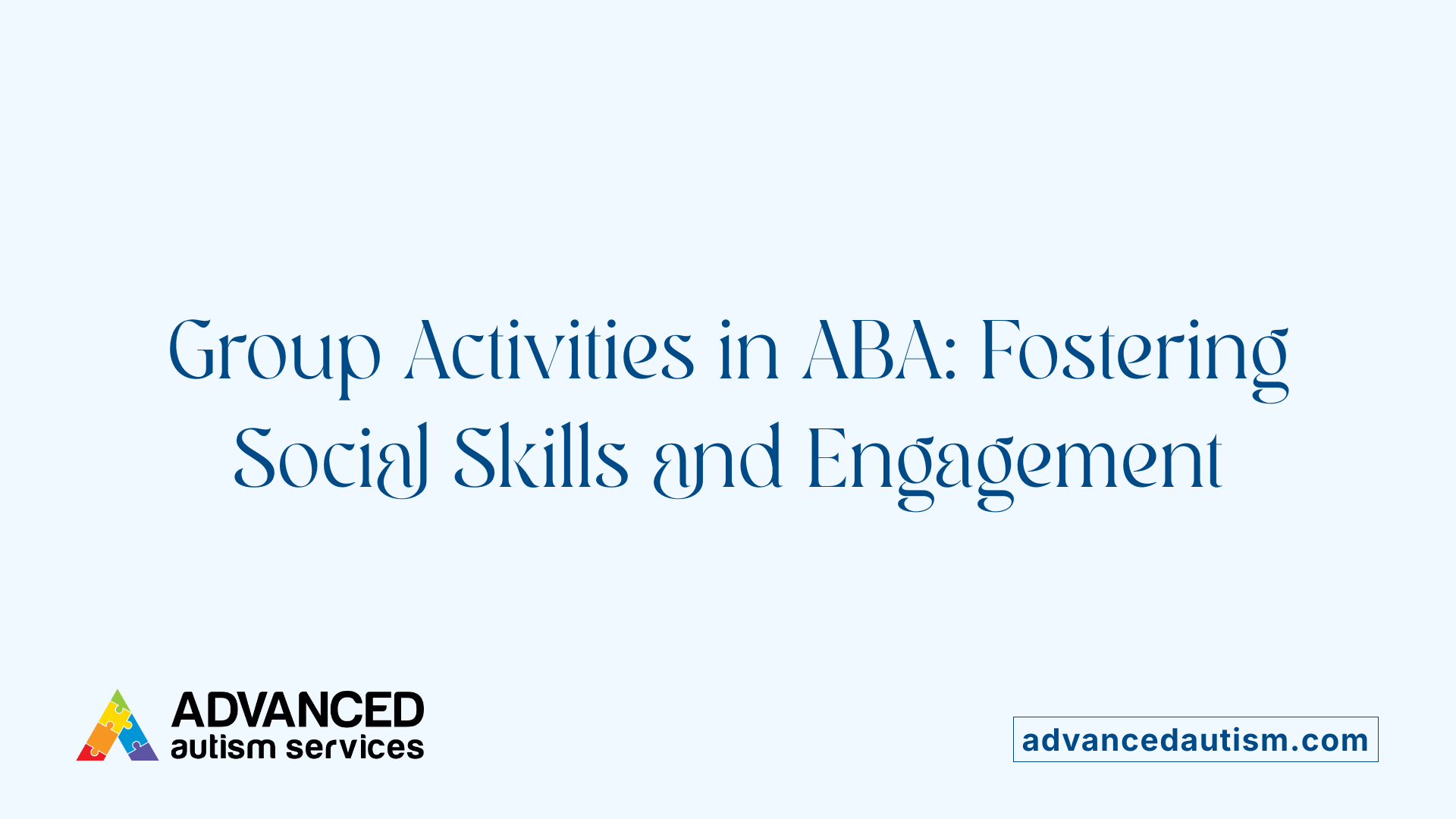
How do group activities promote social interaction and teamwork in ABA therapy centers?
Group activities in center-based Applied Behavior Analysis (ABA) therapy are carefully structured to foster social interaction and teamwork among children with autism spectrum disorder (ASD). Engaging in collaborative games and group tasks allows children to practice working alongside peers, taking turns, sharing responsibilities, and developing cooperative skills in a safe and supportive environment.
In what ways do group sessions enhance communication skills?
Communication skill enhancement is a fundamental goal of ABA group sessions. During activities such as role-playing and group discussions, children are encouraged to express their thoughts, use language strategically, and interpret social cues, which collectively improve their pragmatic and expressive communication abilities.
What types of activities are typically involved, and how do they support developmental goals?
Activities like collaborative games, role-playing, and art projects are commonly utilized. Collaborative games enhance cooperation and problem-solving, role-playing encourages perspective-taking and social understanding, and art projects stimulate creativity while providing a medium for expressive communication and emotional expression.
How does peer learning contribute to reinforcing social norms?
Peer learning through these group settings helps children observe and imitate appropriate social behaviors modeled by peers and therapists. This naturalistic learning environment reinforces social norms such as turn-taking, empathy, and respect, promoting generalization of these behaviors beyond the therapy setting.
How do group dynamics support emotional regulation and expression?
Group dynamics provide a platform for children to practice managing emotions alongside others. Engaging in play and structured group activities helps children recognize their own feelings, respond to others’ emotions appropriately, and utilize coping strategies within a community context, which are crucial skills for emotional regulation.
Overall, incorporating group activities within center-based ABA therapy not only enhances social and communication skills but also provides vital opportunities for emotional growth and peer interaction, ensuring a holistic approach to the developmental needs of children with ASD.
How Group Activities Complement Individual ABA Treatment Plans

Generalization of Social Skills Learned Individually
Group activities in ABA therapy provide essential opportunities for children with autism to apply social skills learned during one-on-one sessions in more naturalistic, peer-driven environments. This practice facilitates the transfer, or generalization, of behaviors beyond the therapy setting, making learned skills more functional and sustainable in everyday life.
Practice of Communication and Social Behaviors in Naturalistic Settings
In structured group sessions, children can engage in real-time communication, cooperative play, and turn-taking. These naturalistic interactions encourage spontaneous social exchanges, enhancing communication skills developed during individualized therapy.
Building Friendships and Peer Networks
Participating in group activities nurtures social bonding and helps children form friendships, which are crucial for emotional well-being and social development. Group settings encourage collaboration, empathy, and shared experiences that extend beyond therapy hours.
Reducing Isolation and Separation Anxiety
Group environments help diminish feelings of isolation by situating children alongside peers with similar challenges. This interaction can also alleviate separation anxiety by providing a supportive social context that promotes emotional security.
Integration with Individualized Goals and Data-Driven Assessment
ABA centers carefully design group activities to align with each child's individualized treatment goals, monitored through ongoing data collection and assessment. This integration ensures that group therapy complements individual sessions effectively, reinforcing progress and highlighting areas needing adjustment.
Together, group activities foster a comprehensive approach that enhances social interaction, emotional regulation, and communication skills, thus supporting superior outcomes in ABA therapy.
Parental Involvement and Training in Center-Based ABA Programs
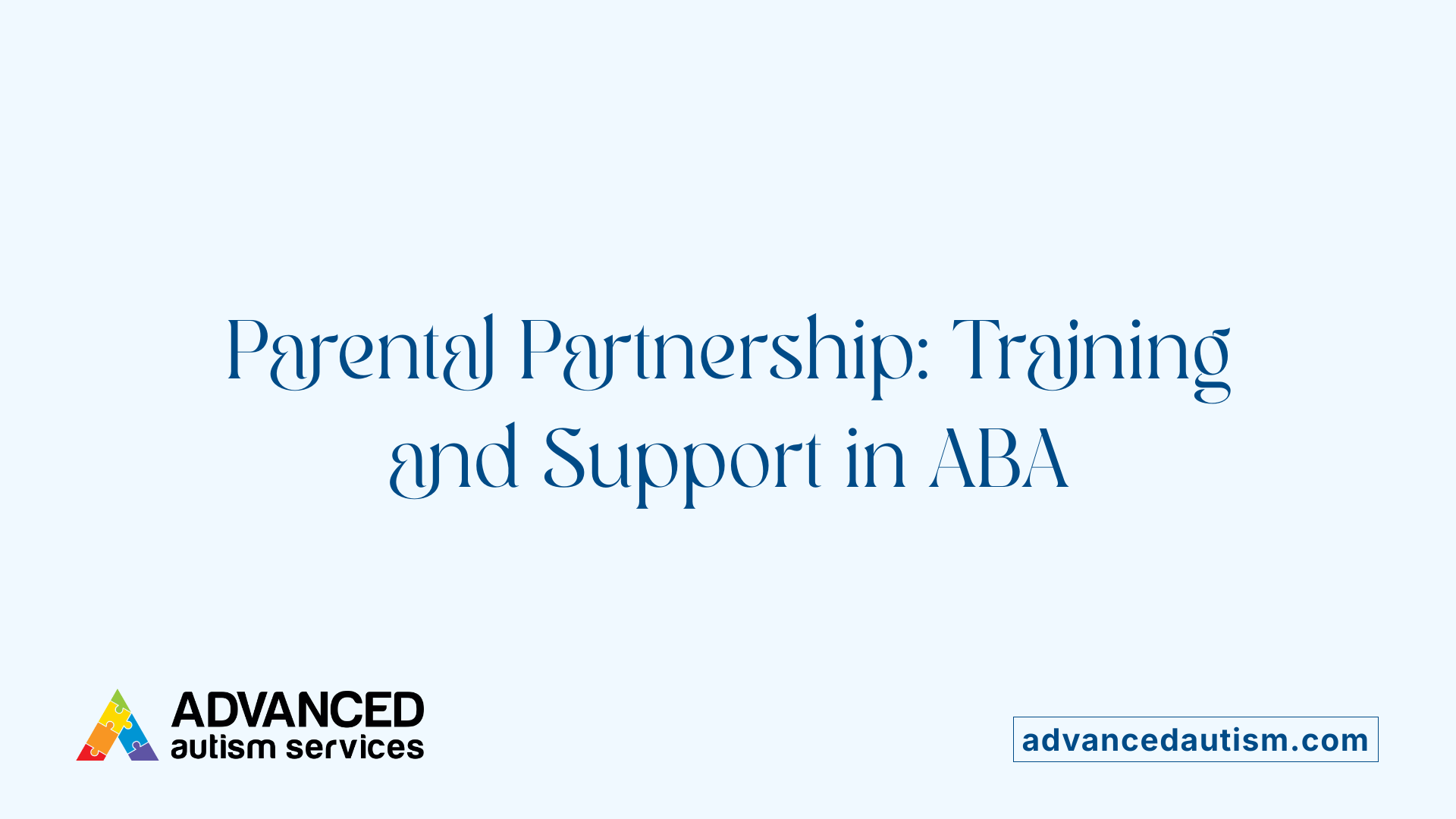
Educating Parents on Reinforcement Strategies
ABA therapy centers place great emphasis on teaching parents how to use positive reinforcement effectively at home. Parents learn to identify and reward desirable behaviors consistently, which helps reinforce the skills learned during therapy sessions.
Guidance on Handling Challenging Behaviors at Home
Therapists provide parents with practical strategies to address and manage challenging behaviors outside the clinical setting. This guidance enables families to maintain a supportive and structured environment that promotes steady progress.
Ensuring Therapy Consistency Across Settings
Consistency is crucial for maximizing ABA therapy's benefits. Centers work closely with parents to ensure that techniques and interventions practiced during sessions are implemented in the child’s natural environment, promoting skill generalization and maintenance.
Support for Transitions Between Therapy Phases
ABA centers assist families in navigating transitions between different therapy stages or care levels. This support helps sustain developmental gains and reduces stress during periods of change.
Empowering Families to Support Social Skill Development
Parents are encouraged and trained to facilitate social interactions for their children, using structured play, role-playing, and communication strategies. This partnership enhances the child’s ability to develop meaningful social relationships.
This collaborative approach, involving parent education and ongoing support, strengthens the overall effectiveness of ABA therapy by integrating learning into everyday family life.
Therapeutic Techniques Used During Group Sessions
How is positive reinforcement utilized in group settings?
Positive reinforcement, a cornerstone of Applied Behavior Analysis (ABA), is widely employed in group sessions to encourage desirable behaviors. Therapists provide rewards such as praise, tokens, or access to preferred activities immediately following a child's positive action or social interaction. This approach motivates children to repeat these helpful behaviors within the group dynamic, enhancing learning through peer observation and participation.
What role does role-playing play in teaching social cues and responses?
Role-playing is a vital technique used during ABA group therapy to foster understanding and proper use of social cues. Children engage in scripted or spontaneous interactions that simulate real-life social situations. This hands-on practice allows them to learn and rehearse appropriate responses, improving their social communication skills.
How is natural environment training implemented through play and collaboration?
Natural environment training (NET) involves practicing skills in real-world, functional settings. In group sessions, this is achieved through interactive play and cooperative activities, where children learn to apply social, communication, and behavioral skills organically. This method reinforces learning in a context similar to everyday life, boosting generalization and retention.
What are structured social skills groups focusing on teamwork and communication?
Structured social skills groups provide an organized framework where children participate in activities emphasizing teamwork, turn-taking, listening, and effective communication. These groups encourage peer interaction and help children develop the social competencies needed for positive relationships.
How is data collected during group activities to monitor progress?
Behavior analysts and therapists systematically record observations and measure specific behaviors during group sessions. Data collection includes frequency counts, duration measurements, and qualitative notes on social interactions. This ongoing assessment ensures that interventions are tailored and adjusted based on individual progress and group dynamics.
| Technique | Description | Purpose |
|---|---|---|
| Positive Reinforcement | Rewards used to encourage repetition of positive behaviors | Strengthen desired behaviors through motivation |
| Role-Playing | Simulated social interactions | Teach social cues and appropriate responses |
| Natural Environment Training (NET) | Skill practice within play and collaborative tasks | Promote real-life application and generalization |
| Structured Social Skills Groups | Organized teamwork and communication activities | Build social communication and cooperation |
| Data Collection | Systematic tracking of behaviors and interactions | Monitor progress and tailor interventions |
Maximizing Long-Term Developmental Gains through Combined Modalities
Why is ongoing support and smooth therapy transitions important?
Ongoing support ensures that children with autism continue to apply the skills they have learned in therapy to real-life situations, preventing skill loss over time. Smooth transitions between different levels of therapy or care settings help maintain consistency, reducing anxiety and behavioral setbacks. Centers often emphasize these transitions to provide a seamless experience that promotes sustained progress.
How does continuity of care from center to community benefit children?
Effective ABA programs prioritize continuity of care by bridging the structured environment of therapy centers with the child's natural community setting. This approach helps children generalize skills beyond the therapy room, enabling them to navigate social interactions and daily activities with increased independence. Support in multiple environments ensures that progress made in the center translates into meaningful gains at home, school, and in the community.
How are skills maintained and reinforced outside therapy sessions?
Parental involvement and education play a crucial role in reinforcing learned behaviors. ABA centers provide parents with training on reinforcement strategies and handling challenging behaviors, empowering them to apply these techniques in everyday settings. Reinforcing skills through consistent practice in natural environments helps solidify gains and encourages spontaneous use of social, communication, and daily living skills.
How does group-based ABA therapy contribute to holistic development?
Group activities promote social interaction, teamwork, and communication skills among peers, which are vital components of emotional and social development. Collaborative games, role-playing, and art projects within group settings facilitate learning in a supportive and enjoyable context. This social engagement complements individual therapy goals by enhancing emotional regulation, friendships, and adaptive behaviors.
What is the future outlook for children engaging in group-based ABA therapy?
Children participating in group-based ABA therapy are likely to experience improved socialization and communication skills that support lifelong development. Continued exposure to peer interactions and structured social learning prepares them for greater independence and community inclusion. With sustained support and skill reinforcement, these children have a promising trajectory toward enhanced quality of life and participation in everyday activities.
Embracing Group Activities as a Pillar in ABA Therapy Centers
Group activities in center-based ABA therapy enrich individualized treatment by providing experiential platforms for children with autism to practice and develop crucial social, communication, and emotional regulation skills. These structured group sessions not only facilitate peer interaction and teamwork but also foster naturalistic learning opportunities that help generalize skills to everyday life. Supported by a highly qualified team, specialized resources, and ongoing assessment, group interventions deepen the therapeutic impact and contribute to meaningful, lasting developmental progress. Integrating parental involvement further strengthens this continuum of care, ensuring consistency and maximizing benefits. Ultimately, incorporating group activities as a core element of ABA therapy centers helps children with autism build foundations for greater independence and social integration, highlighting the indispensable role these activities play in comprehensive treatment strategies.
References
- The effectiveness of applied behavior analysis program ...
- Applied Behavior Analysis (ABA)
- 6 Benefits of ABA Therapy for Children with Autism
- Top Benefits of Center-Based ABA Therapy: Guide for Parents
- Efficacy of Interventions Based on Applied Behavior ...
- Applied Behavior Analysis (ABA)
- Applied Behavior Analysis (ABA)
- Applied Behavior Analysis
- The effectiveness of applied behavior analysis program ...
- The Controversy Around ABA



